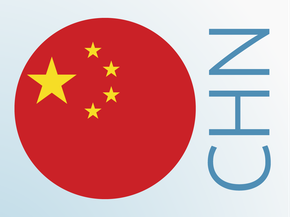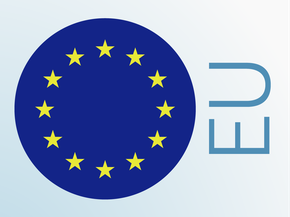Current Policy Projections
Overview
Under current policy projections, GHG emissions in Ethiopia are expected to be in the range of 185–255 MtCO2e in 2030 (excluding. LULUCF), compared to historic emission levels of 103 MtCO2e excluding LULUCF in 2013 (from +79% to +147% relative to 2010 levels). This emissions range reflects uncertainty around the implementation of climate-related policies. For example, Ethiopia’s Second National Communication provides a new BAU scenario where the emissions level in 2030 is significantly lower than the one in the NDC. We assume this new BAU scenario to include policies put forward under the First Growth and Transformation Plan (GTP I)– which is a five-year plan put forward by the government to enhance the economy—and we use this projection as the basis for the upper end of the range of our current policy scenario. Conversely, the Second Growth and Transformation Plan (GTP II) reiterates the targets put forward in the NDC (based on the CRGE strategy) to be achieved by 2020 (Federal Democratic Republic of Ethiopia, 2016), which represents the lower-end of the range of our current policy projections. In contrast to the GTP I, no progress report has been published on the state of implementation of GTP II by the government.
Ethiopia is experiencing high economic growth, with rising per capita incomes, and falling poverty rates. On average, GDP grew at a rate 10.5% during the period 2005/06–2015/16 but has since slowed to 8%. In the Second Growth and Transformation Plan running until 2020 Ethiopia aims at an annual growth of 11%, while projections from the Government’s Second National Communication envision sustained economic growth up to 2030 (set at 8.4% per year).
Agriculture
Ethiopia’s long-term vision focuses on eradicating poverty, with the aim of it becoming a low middle-income economy by 2025 (“Multi-Sector Investment Plan for Climate Resilient Agriculture and Forest Development,” 2017). In such a context, the agricultural sector is pivotal for reducing poverty (Diao and Pratt 2007). The aim of the government is to build an economy based on a modern agricultural sector, with the industrial sector also playing a leading role in the economy. An agricultural sector resilient to climate change impacts is important for the future of the economy (Evangelista et al. 2013; Mideksa 2010, Robinson et al. 2012).
Energy
Ethiopia participates in the SREP Scaling-Up Renewable Energy Program (SREP) Investment Plan funded by the Climate Investment Fund. The SREP is embedded in the Growth and Transformation Plan (GTP) which has three broad goals. First, it aims to increase power generation capacity up to 22 GW in 2030 with an intermediate target of 10 GW in 2015. Next, it plans to increase electricity coverage from 60% in 2015 to 90% by 2020 (Federal Democratic Republic of Ethiopia, 2016). Finally, the government also plans to become an exporter of electricity and a green hub in East Africa in the near future (REEP policy database, 2014), which will require investments in an extensive distribution grid.
Meeting these goals hinges on new hydropower projects, including the Grand Ethiopian Renaissance, the Gilgel Gibe III and the Gilgel Gibe IV dams, with an estimated total capacity of 9.4 GW (WEO 2014). The Gilgel Gibe III dam was completed in 2016 and will contribute to Ethiopia’s power production with 1.8 GW once running at full capacity (The Economist, 2016). Next to Gibe III, Ethiopia is building the Grand Ethiopian Renaissance Dam which will be more than thrice its size (Dale Whittington, 2016). As of 2016, only 4.2 GW of renewable capacity had actually been installed, with hydropower capacity accounting for 3.8 GW (IRENA, 2016). Failure to meet the targets of planned renewables capacity extension defined in the Growth and Transformation Plan (GTP) has been mainly caused by delays in construction plans for these three main hydropower dams.
These delays can be attributed to concerns over the sustainability of the dams, and their effect on downstream riparian states such as Egypt. There is significant disagreement between Egypt and Ethiopia over the applicability of old Nile treaties and international law (Yihdego et al. 2016). While this is a potential source of conflict it is important to note the potential benefits of the dam have brought the countries affected together to formulate a Declaration of Principles in March 2015 (Reuters, 2015). These benefits include the increased effectiveness of downstream hydropower projects, sedimentation management and minimised evaporation losses (Chekene Tesfa, 2013).
Water management in the dams and downstream flow regions of the River Nile is further complicated by high variability which is likely to be compounded by the effects of climate change (Hammond, 2013). Further, the Gilgel Gibe III dam has had a negative impact on the water level and salinity of lake Turkana in Kenya (The Economist, 2016). Reaching a permanent legal or institutional framework accepted by the affected states, which addresses the negative environmental effects will be pivotal for Ethiopia to meet the targets of the GTP.
To facilitate the investments in new renewables, a feed-in-tariff scheme is under discussion (Climate Scope, 2014). The government is fostering the development of wind turbines (1.2 GW by 2020). In the meantime, several tenders for hydro and solar projects are available for bidding (Export.gov, 2017) and the government recently announced the introduction of a tender policy for hydro and solar projects.
The majority of the population still relies on biomass to fulfil its energy needs (Mulugetta 2008), although a transition towards modern sources of energy seems promising (Guta 2014). The biomass use puts high pressure on forests, where emissions from deforestation have increased significantly over recent decades. Indeed, the most efficient way of reducing emissions is to reduce fuel-wood consumption, by using efficient stoves and modern (e.g. electricity based) cooking technologies. Emissions from forestry are projected to reach 90 MtCO2e in 2030.
Other sectors
According to Ethiopia’s Second National Communication, the largest contributors to future GHG emissions will be agriculture (emissions are expected to reach 70–160 MtCO2e in 2030) and the industry sector (50-70 MtCO2e in 2030). Emissions from buildings are likely to increase (because of the rise in waste and off grid-energy), along with the forestry sector (mainly as a consequence of deforestation and degradation).
Emissions from the Forestry sector can be tackled via REDD (Reducing Emissions from Deforestation and Forest Degradation) initiatives, and Ethiopia has already put in place the second-largest afforestation and reforestation programme in the world (CRGE 2010). The current status of implementation is unknown. The REDD strategy was recognised in the Forest Sector Review (MEFCC, 2017) in 2017 but contained no further analysis. The Forest Sector Review shows the increasing need for wood due to population growth and increasing demand for industrial roundwood (MEFCC, 2017, p. 9). The relative share of fuelwood would decrease with continued urban development and improved electricity access. Afforestation and reforestation can bridge the expected increase of wood demand until 2033.
Further analysis
Latest publications
Stay informed
Subscribe to our newsletter




